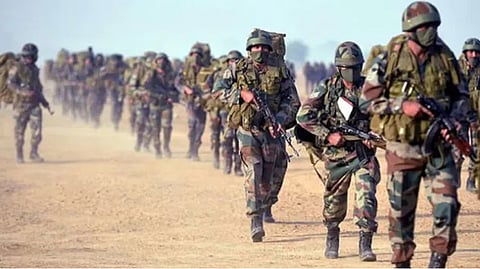

The disputed region near Yangtse in the Tawang Sector on the McMahon Line in Arunachal Pradesh witnessed a violent skirmish last week, when Indian and Chinese troops posted on the border engaged in a clash, which led to six Indian army soldiers being injured. Over 300 armed soldiers of the People’s Liberation Army (PLA) of China were deployed to the Line of Actual Control (LAC) during the clash. However, the belligerents had not anticipated the level of preparedness of the Indian soldiers.
Earlier in May 2020 in Galwan, Ladakh, Indian and Chinese troops had engaged in a bloody altercation which had led to the death of 20 Indian and 40 Chinese soldiers. With regard to the Tawang incident, military sources reiterated that along the LAC, there are areas of differing perception due to which the militaries of both nations patrol the area up to the point of their respective claim lines. And it’s been something that has been witnessed since 2006.
Yangtse, which lies further northeast of Tawang, falls within Indian territory, but it’s yet another disputed pocket between the two nations. What has caused India even more aggravation is that PLA soldiers have been carrying out unusually big patrols here as compared to other zones along the LAC. And this has evolved into frequent transgressions on part of Chinese soldiers in the area since 2011.
The latest incident has prompted a war of words between New Delhi and Beijing. Defence Minister Rajnath Singh said that Chinese troops had unilaterally attempted to alter the status quo on the LAC in AP on December 9. While Singh emphasised no one will be able to capture an inch of land while the BJP was in power, Beijing responded saying Indian troops triggered the clash by illegally crossing the LAC, even as the PLA soldiers had embarked on a routine patrol.
The clash has underscored the growing risk of strategic miscalculation along the Indo-China border. China’s aggressive posturing thoroughly discounts India’s willingness to give a fitting retort. The two fundamental Chinese assumptions in this case include India being unwilling to intentionally escalate a military response to low-impact acts of coercion. The other assumption is that we will not form military alliances against an aggressive Beijing. These assumptions now need to be weighed against the manner in which India perceives China – it’s certainly not a partner or an ally so to speak.
In spite of the three decades of relative peace on the border, a sense of clarity has now dawned on India. It allows us to view China for what it really represents — an adversary. India’s appetite for taking military risks was highlighted during the Snow Leopard counter operation at Rezang La/Rechin La, in August 2022. India’s counter strike in the area south of Pangong Lake compelled China to disengage on the north bank, which many saw as an inversion of India’s risk aversion and an intentional escalation by New Delhi that threw Beijing for a loop.
The aforementioned episode proves India is willing to enhance its military capacity to prepare for a sort of armed coexistence that we expect will prevail in the LAC. India also needs better risk management in the border region. As was witnessed in Galwan, preventive measures by themselves will be insufficient to deter Beijing, which believes it has a military edge over the LAC. ers of both nations have avoided a formal meeting at two recent multilateral summits. Now, India needs to shift the focus of its engagement with China to a politico-strategic level, for which it is essential that both nations resume the political dialogue.
Visit news.dtnext.in to explore our interactive epaper!
Download the DT Next app for more exciting features!
Click here for iOS
Click here for Android